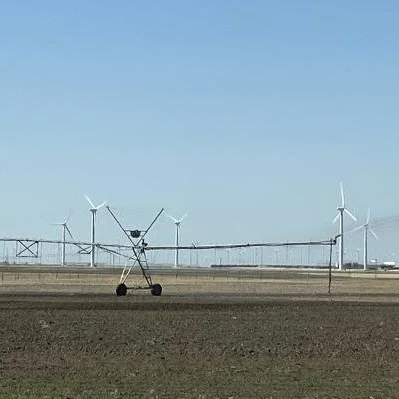The 2022/23 U.S. corn outlook for this month calls for lower supplies, reduced feed and residual use, slightly higher food, seed, and industrial use, smaller exports, and lower ending stocks. Projected beginning stocks for 2022/23 are 20 million bushels higher based on a lower use forecast for 2021/22, where a reduction in corn used for ethanol is partially offset by greater use for glucose and dextrose.
Read MoreLouisiana corn for grain production is forecast at 84.9 million bushels, down 18 percent from 2021. Based on conditions as of August 1, yield is expected to average 175 bushels per acre, down 8 bushels from last year. Producers expect to harvest 485,000 acres of corn for grain, down 80,000 acres from 2021.
Read MoreAs Louisiana cotton producers move into cotton harvest season, Louisianians will see an influx of used and custom cotton harvest equipment moving into and through the state. With this introduction of equipment into the environment, the Louisiana Department of Agriculture and Forestry (LDAF) must implement restrictions to protect our cotton producers by preventing the introduction of boll weevils.
Read MoreKater Hake, vice president of Agricultural and Environmental Research with Cotton Incorporated, plans to retire by the end of the year. Hake was honored for his many contributions to the cotton industry at the recent Southern Cotton Ginners Association summer meeting.
Read MoreSpot quotations were 37 points higher than the previous week, according to the USDA, Agricultural Marketing Service’s Cotton and Tobacco Program. Quotations for the base quality of cotton (color 41, leaf 4, staple 34, mike 35-36 and 43-49, strength 27.0-28.9, and uniformity 81.0-81.9) in the seven designated markets averaged 104.41 cents per pound for the week ending Thursday, July 28, 2022.
Read MoreIn the Southeastern states of the Cotton Belt, target spot and areolate mildew rise to the top of the list of troublesome cotton foliar diseases. Knowing that these two diseases pose a high risk of negative effects later in cotton’s growing season, Cotton Incorporated has teamed up with the University of Georgia to fund research on how to identify and manage these issues.
Read MoreHow will this year’s weather conditions affect crop production? The Monthly Agricultural Yield Survey conducted by the U.S. Department of Agriculture’s National Agricultural Statistics Service (NASS) will survey U.S. farmers beginning July 30, 2022, regarding yields of the major row crops throughout the growing season across the United States.
Read MoreU.S. cotton growers pressed by drought are expected to abandon almost a third of planted acres against a backdrop of collapsing prices that are causing a bit of head scratching, Scott Stiles, extension economist for the University of Arkansas System Division of Agriculture, said on Wednesday.
Read MoreIf you want to honor a cotton consultant, nominate him or her for the prestigious 2022 Cotton Consultant of the Year (CCOY) Award.
Read MoreThis month’s 2022/23 U.S. corn outlook is for larger supplies and higher ending stocks. Corn beginning stocks are raised 25 million bushels, based on reduced feed and residual use for 2021/22 as indicated in the June 30th Grain Stocks report.
Read MoreI'm sure that if you are of a certain age and chopped any cotton at all, you remember working in cotton that was over your head.
It was always late in the season when the summer rains pushed plant growth and the cotton went vegetative. When you were in a field of high cotton the air flow stopped and humidity hung like a wet, weighted blanket.
Read MoreThere is nothing more sustainable or more down to earth than growing cotton in Alabama, according to Alabama Cooperative Extension System Cotton Agronomist Steve Brown. The cotton plant is still growing in much the same way as it did 200 years ago. The crop’s resilience throughout history has earned it a reputation for sustainability and secured a permanent rotation in the state.
Read MoreThe NCC is seeking $15.73 million for the APHIS Cotton Pests Account (a $1 million increase) for aggressively completing boll weevil eradication in Texas’ Lower Rio Grande Valley. Sufficient funding
was requested so the FSA can make up to $30 million in loans to eligible producer-controlled organizations carrying out eradication activities. The NCC requested a $1 million increase directed to ARS for research on cotton seed bug control and level funding for research aimed at controlling cotton blue disease, cotton leafroll dwarf virus and other exotic pathogens.
The Cotton Consultant of the Year (CCOY) Award recognizes a consultant who has made great contributions to the cotton industry through outstanding customer relations, leadership and innovation.
The prestigious award, sponsored by Syngenta and Cotton Farming magazine, celebrates its 42nd anniversary this year. Nominees are voted on by former CCOY winners.
Read MoreWe have been terribly, terribly dry, but over the past six days (from July 5) we’ve gotten pretty good rain everywhere. There were some isolated areas that didn’t get enough, but overall, it was a very beneficial rain.
Read More














